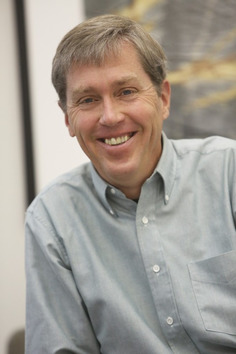The business world has learned over the last two decades how to scale technology – now it’s time to scale the organization. A new breed of Exponential Organizations (or ExOs) are delivering 10x or better performance benchmarks compared to their peers. We present below the 100 most scalable organizations in the world, based on the diagnostic survey in the award-winning book, “Exponential Organizations”.
Get Started for FREE
Sign up with Facebook Sign up with X
I don't have a Facebook or a X account
 Your new post is loading... Your new post is loading...

Farid Mheir's curator insight,
January 14, 2017 1:58 PM
An essential book (kindle book http://amzn.to/1SC8rvp) from Ray Kurzweil that presents data supporting the theory that technological evolution follows an exponential curve. The chart is a famous illustration of this exponential technology growth.
It explains quite well how the personal computer has been able to become part of our lives in such a rapid manner. With evidence and data form many technologies - from the microprocessor to DNA evolution - Kurzweil predicts a future where technology will help humans transcend the limitations that nature has imposed on us.
Kurzweil is an optimist and shares with us a very positive outlook on the future. Not only is it an eye opening book, it has become the basis for a slew of new studies and gathering, including the singularity university.

Farid Mheir's curator insight,
November 8, 2015 3:35 PM
An essential book (kindle book http://amzn.to/1SC8rvp) from Ray Kurzweil that presents data supporting the theory that technological evolution follows an exponential curve. The chart is a famous illustration of this exponential technology growth. It explains quite well how the personal computer has been able to become part of our lives in such a rapid manner. With evidence and data form many technologies - from the microprocessor to DNA evolution - Kurzweil predicts a future where technology will help humans transcend the limitations that nature has imposed on us. Kurzweil is an optimist and shares with us a very positive outlook on the future. Not only is it an eye opening book, it has become the basis for a slew of new studies and gathering, including the singularity university.

Pierre Tran's curator insight,
March 4, 2015 3:56 PM
Du Web 1.0 au Web généticiel, une mise en perspective vertigineuse de l'évolution d'internet.

Farid Mheir's curator insight,
January 14, 2017 2:03 PM
A very high-level introduction and review of the work that led to Grok, a new service that will be demonstrated in 2 days at the Amazon re:invent conference. For those like me that were impressed with the book "On Intelligence" and are fans of the theory behind "Singularity is near", then this feels like another small but major step in the direction of intelligent machines.

Farid Mheir's curator insight,
November 9, 2013 12:25 PM
A very high level introduction and review of the work that led to Grok, a new service that will be demonstrated in 2 days at the Amazon re:invent conference. For those like me that were impressed with the book "On Intelligence" and are fans of the theory behind "Singularity is near", then this feels like another small but major step in the direction of intelligent machines. |

Curated by Farid Mheir
Get every post weekly in your inbox by registering here: http://fmcs.digital/newsletter-signup/
|




















If you are familiar with the singularity university (http://singularityu.org/), then this website and accompanying book are just great.
If you are not then I encourage you to read the book The Singularity Is Near (http://sco.lt/8uRqUr) to understand the principles of exponential growth (http://sco.lt/5YVBnV) that explains the speed at which new technologies get introduced and adopted.
A must read for any digital transformation aficionado.